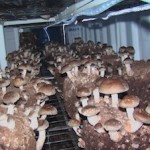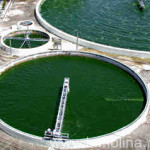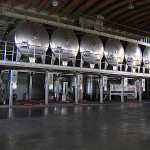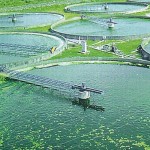By Dr. Bob McCauley
Any plant grown without sunlight seems a little strange to me. You can argue whether Chlorella fermented in tanks is as healthy as Chlorella grown in direct sunlight, but you cannot assert that fermented Chlorella is more natural because it simply isn’t. Chlorella has been growing in direct sunlight for as long as there has been plant life on Earth. Chlorella was the FIRST plant to appear on Earth, and that plant, like all
plants that came after it, grows only in direct and/or indirect sunlight. Only fungus such as mushrooms grows without sunlight and they do not produce chlorophyll.
Chlorella is the great grandfather of all plant life on Earth. Chlorella, the first plant to possess chlorophyll, appeared approximately 4 billion years ago. Fermented, tank-grown Chlorella, on the other hand, has been around since 2007, maybe a little earlier if you count the time it took to research and figure out how to artificially force Chlorella to produce chlorophyll. Some pronounce the invention of fermented  Chlorella to be a “great breakthrough” and an “improvement”, but I am not one of them. If I thought so I would be importing it by the ton and selling it. However, I prefer to sell what I believe to be the best sunlight cultivated Chlorella on the planet, which is grown in Taiwan.
Chlorella to be a “great breakthrough” and an “improvement”, but I am not one of them. If I thought so I would be importing it by the ton and selling it. However, I prefer to sell what I believe to be the best sunlight cultivated Chlorella on the planet, which is grown in Taiwan.
Growing Method of Fermented Chlorella
Chlorella grown using the Heterotrophic Tank Cultivation method is cultivated inside a sealed, sterilized tank. The Chlorella literally never sees the light of day. Sunlight is “replaced by” a solution of glucose and acetic acid, two elements Chlorella requires for the production of chlorophyll. Sorry, but there simply is no “replacing natural sunlight” in my opinion. You can suggest that acetic acid and glucose combined are capable of replacing the God-made photons of sunlight and all the nutrients and life it brings to  plants, but it simply is not true. Fermented Chlorella is yet another attempt by Man to overcome, if not outdo, the natural mechanisms and products of God’s creation. Good luck with that one. Thomas Edison, an atheist, stated “Until man duplicates a blade of grass, nature can laugh at his so-called scientific knowledge”. At least he understood the depth, ingenuity and brilliance needed to create one blade of grass, let alone a single-celled plant called Chlorella which is far more complex. Of course all the wonders of Earth’s plant world pales in comparison to the mind-numbing complexity of the human body.
plants, but it simply is not true. Fermented Chlorella is yet another attempt by Man to overcome, if not outdo, the natural mechanisms and products of God’s creation. Good luck with that one. Thomas Edison, an atheist, stated “Until man duplicates a blade of grass, nature can laugh at his so-called scientific knowledge”. At least he understood the depth, ingenuity and brilliance needed to create one blade of grass, let alone a single-celled plant called Chlorella which is far more complex. Of course all the wonders of Earth’s plant world pales in comparison to the mind-numbing complexity of the human body.
Fermentation is a cheap way to produce Chlorella. What if we started fermenting broccoli, asparagus, or avocados instead of growing them in sunlight as we have always done? Would we consider those “improved”, more nutritious, better tasting, the next “breakthrough”? I think not.
 Processing: Raw vs. Cooked
Processing: Raw vs. Cooked
Fermented chlorella is boiled at temperatures over 127°C (260°F) in order to sterilize the chlorella so it is free of bacteria. This high temperature process is not used in sunlight grown Chlorella from Taiwan. The highest temperature used during natural sunlight grown Chlorella is 40°C (105°F), which occurs during the spray drying procedure that produces Chlorella powder. Sunlight grown Chlorella remains untouched by the destruction and radical reshaping of its organic chemical structure because it is not exposed to high temperatures.
Cracked Cell
The Chlorella cell has a hard outer shell of dietary fiber that is well known for removing radiation and heavy metals from the body. In order to get at the nutrients this tough shell of fiber must be cracked. There are two methods of doing this, Pressure-Release and Dynomill. Both methods are viable although Pressure-Release is quicker and more efficient. However, tank-grown fermented Chlorella producers do not open the cell wall using either of these methods because the cell wall of the Chlorella is so thin. This accounts for the lower amount of dietary fiber in tank-grown fermented chlorella, which is only 13% compared to 20% fiber of sunlight grown Chlorella.
Which Species?
There are two species of Sunlight Chlorella currently grown Chlorella sorokiniana (formally pyrenoidosa) and Chlorella vulgaris. It is not clear which species tank-grown fermented Chlorella is. I have inquired with a few of the producers and none have been forthcoming about which species they sell.
Taste and Feel
I am not suggesting that there is anything harmful in fermented, tank-grown Chlorella or that one should not consume it. However, it is vastly inferior to that of  sunlight grown Chlorella in my opinion. There have been claims that fermented Chlorella which is grown in complete darkness is more nutritious and has higher amounts of protein and chlorophyll. I have not found this to be the case in the nutritional analyses I have compared between sunlight grown and fermented, tank-grown Chlorella.
sunlight grown Chlorella in my opinion. There have been claims that fermented Chlorella which is grown in complete darkness is more nutritious and has higher amounts of protein and chlorophyll. I have not found this to be the case in the nutritional analyses I have compared between sunlight grown and fermented, tank-grown Chlorella.
|
Sunlight Grown Chlorella |
Fermented tank-grown |
|
| Carbohydrate: |
5.4 – 6.4g |
3.7g |
| Moisture: (lower is better) |
3.5 – 3.7g |
5.4g |
| Vitamin B1: |
2.08 – 2.58 mg |
1.29 mg |
| Vitamin B6: |
2 – 2.32 mg |
1.62 mg |
| Vitamin B12: |
130 – 220 mcg |
NA |
| Vitamin K1: |
3000 mcg |
263 mcg |
| Pantothenic acid: |
4.6 – 6.2 mg |
1.8 mg |
| Iron: |
126 – 162 mg |
22.4 mg |
| Calcium: |
119 – 176 mg |
5.1 mg |
However, it is not strictly about comparing nutritional content between these two Chlorella products that are grown incompletely different environments. True their nutritional profiles are pretty close to one another, but there are other important differences that go beyond mere testing.
Like any wine or favorite food, so much of it comes down its taste and, more importantly, how it makes you feel. I personally find the taste of fermented Chlorella to be quite different from that of sunlight grown Chlorella. I would describe the taste as unnatural, more like that of the contrived flavor of a processed food trying to mimic a natural one. It definitely has a yeasty taste to it, and is much lighter in color than sunlight grown Chlorella, which is a deep, rich green. In addition, fermented Chlorella leaves me feeling flat, and does not give me the energizing lift that I get from sunlight grown Chlorella.
Recommendations
Personally, I would only eat fermented Chlorella in an emergency situation, as I would any other survival food if crisis circumstances were to arise. I am a raw foodist, and have been since 1999. However, I would eat cooked food – even processed food – to survive in an extreme emergency. They would be my last resort, as would fermented, tank-produced Chlorella.
Fermented Chlorella certainly is not a Genetically Modified Food (GMO), but it moves in that direction because it gravitates away from the Natural – that which God created – toward something more like that of an artificial, man-made processed food.
Other Chlorella Sources
Japanese Chlorella has, unfortunately, become a victim of the perception that it may contain radiation from the massive Fukushima disaster that occurred in 2011 and continues today. Whether the notion of it being contaminated by radiation is true I do not know since a Radiation Test Certificate has not been released to the public from any of the Japanese Chlorella producers. However,we do provide Radiation Test Certificates and live updates of radiation levels in Taiwan in order to demonstrate beyond any doubt that our Chlorella and Spirulina from Taiwan is radiation free. I am quite concerned about radioactive contamination from Fukushima showing up in Hawaii and on the West Coast of the US. We started a website dedicated to Awareness and Protection from Radiation.
Chlorella grown in Korea – as of 2014 – is strictly of the fermented, tank-grown variety.
Some Chinese Chlorella has problems that stem from environmental contamination – particularly heavy metals – due to the high levels of industrial pollution that China is notorious for. China has a terrible reputation in the world’s food industry. When I attend ingredient expos I find little interest in Chlorella or Spirulina sourced from China due to its dismal reputation.
Some Chinese Chlorella also has persistent issues with the consistency of its products from batch to batch, year to year, decade to decade. The samples that producers first provide you with are often quite different from the product you eventually receive from them.
I  have imported Chlorella from Taiwan for 18 years (since 1996) and the powder and tablets have always had the same consistent taste, color and appearance with every batch I have imported. This is what sets Chlorella grown in Taiwan apart from any other Chlorella in the world.
have imported Chlorella from Taiwan for 18 years (since 1996) and the powder and tablets have always had the same consistent taste, color and appearance with every batch I have imported. This is what sets Chlorella grown in Taiwan apart from any other Chlorella in the world.



This is the perfect webpage forr anybody who
wants to fin out about this topic. Youu realize a whole lot its almost hard to argue with you (not that I actually would want to…HaHa).
Yoou definitely put a new spi on a subject that’s been written about
for years. Wonderful stuff, just excellent!